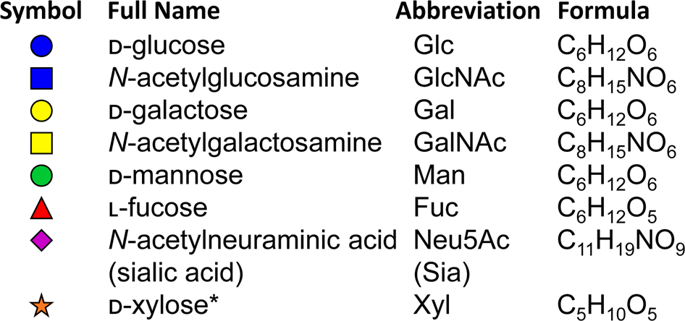当前位置:
X-MOL 学术
›
npj Schizophr.
›
论文详情
Our official English website, www.x-mol.net, welcomes your feedback! (Note: you will need to create a separate account there.)
Post-translational protein modifications in schizophrenia.
npj Schizophrenia ( IF 5.4 ) Pub Date : 2020-03-02 , DOI: 10.1038/s41537-020-0093-9 Toni M Mueller 1 , James H Meador-Woodruff 1
npj Schizophrenia ( IF 5.4 ) Pub Date : 2020-03-02 , DOI: 10.1038/s41537-020-0093-9 Toni M Mueller 1 , James H Meador-Woodruff 1
Affiliation

|
Research investigating the pathophysiology of schizophrenia has not yet precisely defined the molecular phenotype of this disorder. Many studies have investigated cellular dysfunction by examining expression levels of molecular targets in postmortem patient brain; however, inconsistencies between transcript and protein measures in schizophrenia are common in the field and represent a challenge to the identification of a unified model of schizophrenia pathogenesis. In humans, >4800 unique proteins are expressed, and the majority of these are modified by glycans and/or lipids. Estimates indicate ~70% of all eukaryotic proteins are modified by at least one type of glycosylation, while nearly 20% of all proteins are known to be lipid-modified. Protein post-translational modification (PTM) by glycosylation and lipidation rely on the spatiotemporal colocalization of enzyme, substrate, and glycan or lipid donor molecule and do not require an upstream "blueprint" or specialized processing machinery for synthesis. Glycan and lipid PTMs can thus facilitate cellular adaptation to environmental signals more rapidly than changes of gene or protein expression, and can significantly impact the localization, function, and interactions of modified substrates, though relatively few studies in schizophrenia have evaluated the PTM status of target proteins. A growing body of literature reports glycosylation and lipidation abnormalities in schizophrenia brain as well as in patient peripheral fluids. In this review, we explain the functional significance of key glycan and lipid PTMs and summarize current findings associated with abnormal glycosylation and lipidation in this illness.
中文翻译:

精神分裂症的翻译后蛋白质修饰。
研究精神分裂症的病理生理学的研究尚未精确定义这种疾病的分子表型。许多研究通过检查死后患者大脑中分子靶标的表达水平来研究细胞功能障碍。然而,精神分裂症的转录物和蛋白质测量之间的不一致在该领域很常见,并且对鉴定精神分裂症发病机理的统一模型提出了挑战。在人类中,表达了> 4800种独特的蛋白质,其中大多数蛋白质都被聚糖和/或脂质修饰。估计表明,至少70%的真核蛋白质被至少一种糖基化修饰,而已知所有蛋白质的近20%被脂质修饰。通过糖基化和脂质化的蛋白质翻译后修饰(PTM)依赖于酶,底物和聚糖或脂质供体分子的时空共定位,并且不需要上游的“设计图”或合成专用的加工机械。因此,相对于基因或蛋白质表达的变化,聚糖和脂质PTM可以更快地促进细胞适应环境信号,并且可以显着影响修饰底物的定位,功能和相互作用,尽管相对较少的精神分裂症研究评估了靶点的PTM状态蛋白质。越来越多的文献报道精神分裂症大脑以及患者外周液中的糖基化和脂化异常。在这篇评论中
更新日期:2020-03-02
中文翻译:

精神分裂症的翻译后蛋白质修饰。
研究精神分裂症的病理生理学的研究尚未精确定义这种疾病的分子表型。许多研究通过检查死后患者大脑中分子靶标的表达水平来研究细胞功能障碍。然而,精神分裂症的转录物和蛋白质测量之间的不一致在该领域很常见,并且对鉴定精神分裂症发病机理的统一模型提出了挑战。在人类中,表达了> 4800种独特的蛋白质,其中大多数蛋白质都被聚糖和/或脂质修饰。估计表明,至少70%的真核蛋白质被至少一种糖基化修饰,而已知所有蛋白质的近20%被脂质修饰。通过糖基化和脂质化的蛋白质翻译后修饰(PTM)依赖于酶,底物和聚糖或脂质供体分子的时空共定位,并且不需要上游的“设计图”或合成专用的加工机械。因此,相对于基因或蛋白质表达的变化,聚糖和脂质PTM可以更快地促进细胞适应环境信号,并且可以显着影响修饰底物的定位,功能和相互作用,尽管相对较少的精神分裂症研究评估了靶点的PTM状态蛋白质。越来越多的文献报道精神分裂症大脑以及患者外周液中的糖基化和脂化异常。在这篇评论中


























 京公网安备 11010802027423号
京公网安备 11010802027423号